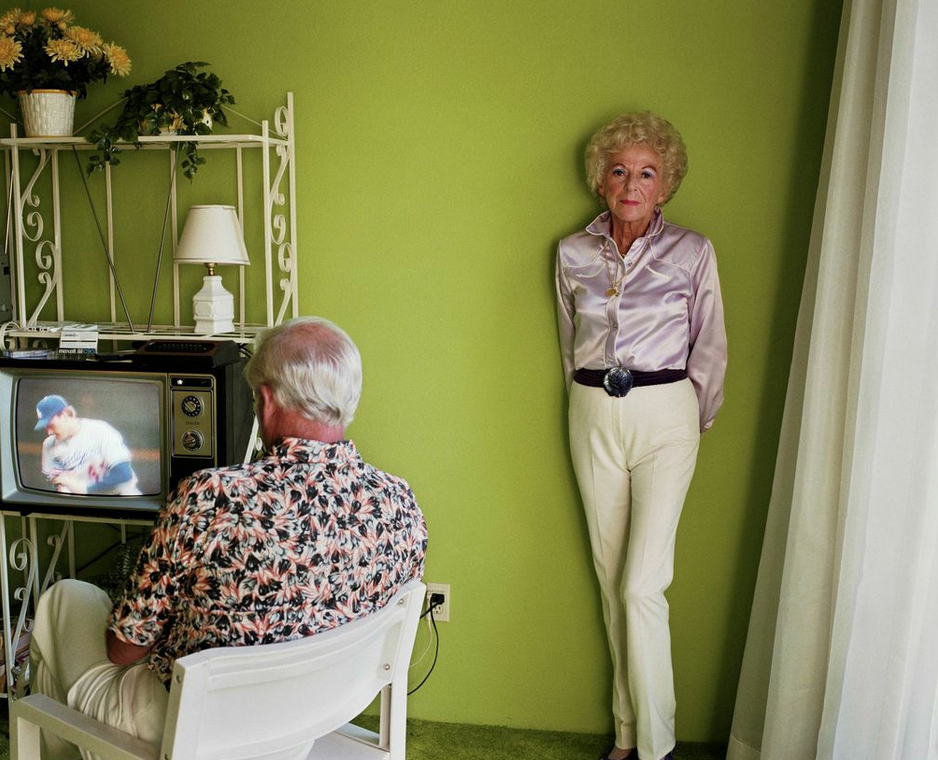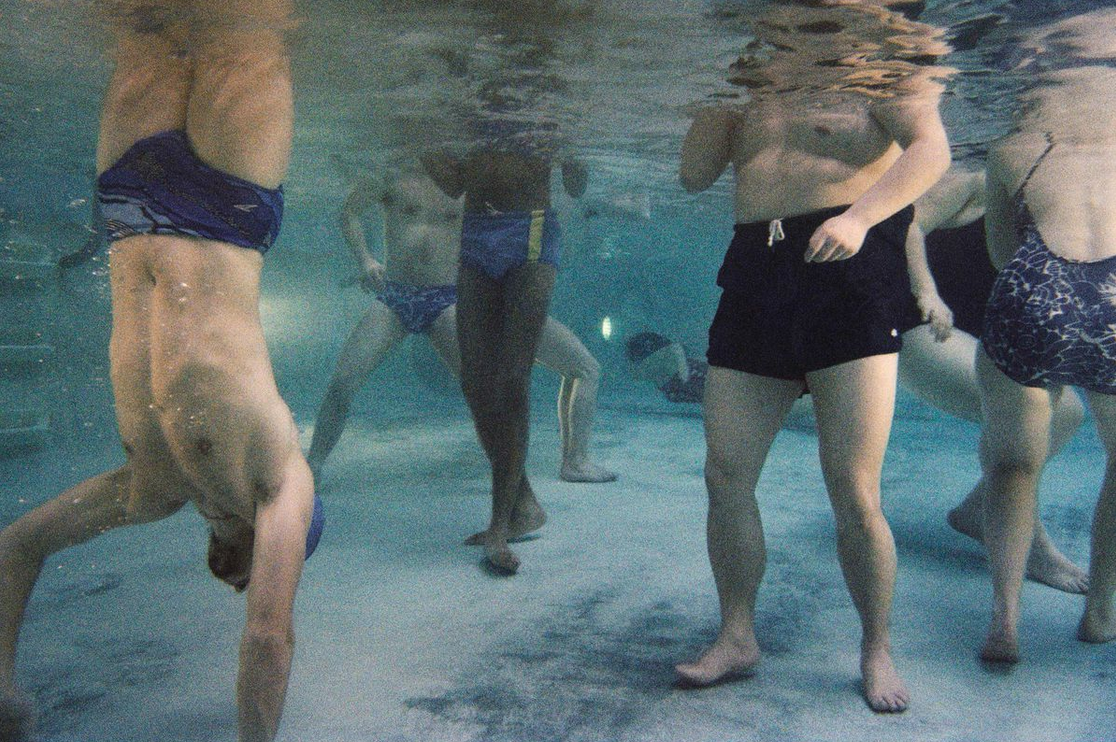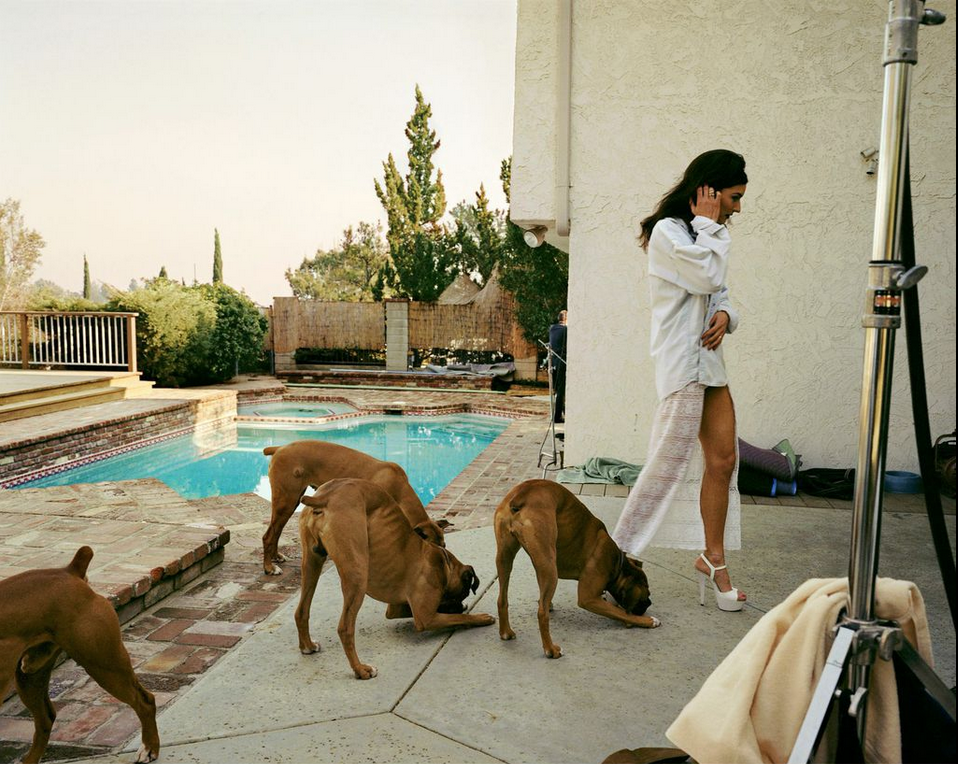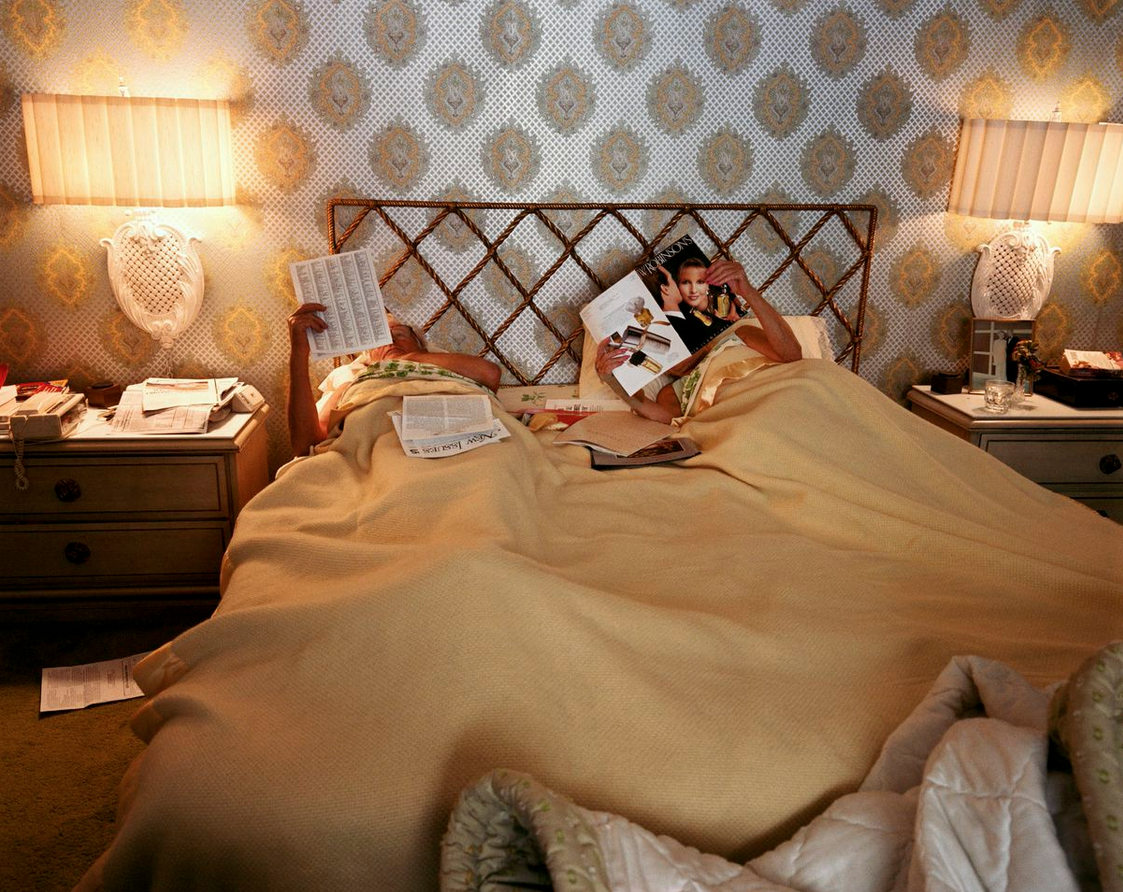
Dad with Golf Clubs from the series “Pictures from Home”, 1987, Larry Sultan. Chromogenic print. 20 x 24 inches. Photo courtesy of the Estate of Larry Sultan © Estate of Larry Sultan
Photographer Larry Sultan grew up in Los Angeles’ quintessentially suburban San Fernando Valley, surrounded by tract homes and strip malls. What might appear bland to others, though, was transformed through his eye into a rich mine of domestic drama. His photos offer a chance to look beyond the cookie-cutter backdrop to the eccentric details of the subject’s particular life.
“I never tire of his images,” said Rebecca Morse, who curated Sultan’s first retrospective, now on display at the Los Angeles County Museum of Art. “Some details are of the world as it stands and some are purposeful and adjusted by him. The combination of those two things creates an interesting tension. You’re rewarded by additional viewings.”

My Mother Posing for Me from the series “Pictures from Home”, 1984, Larry Sultan. Chromogenic print. 40 x 50 inches. Photo courtesy of the Estate of Larry Sultan © Estate of Larry Sultan
For instance, there’s “My Mother Posing for Me,” from a series published in 1984. The main focus of the photograph is nominally the woman standing stiffly in a lavender satin blouse and white polyester pants. But Sultan didn’t just frame his mother in the shot—his father is sitting in the room, too, just to the left. His father, however, is ignoring the photo shoot and doing his own thing—watching the Dodgers on TV.
There’s an element of voyeurism in Sultan’s photographs—they give you the feeling of gaining access to sights you’re not usually allowed to observe. His “Swimmers” series (taken in San Francisco) invites you to stare at people’s bodies under the pool’s surface as they learn how to swim. “The Valley” series takes you on the sets of pornographic movies, where Sultan snapped shots of an empty, dirty-looking mattress or a high-heeled woman in a cover-up, smoothing her hair between shots.

Untitled from the series “Swimmers”, 1978-1982, Larry Sultan. Chromogenic print. 20 x 24 inches. Photo courtesy of the Estate of Larry Sultan © Estate of Larry Sultan

Boxers, Mission Hills from the series “The Valley”, 1999, Larry Sultan. Chromogenic print. 40 x 50 inches. Photo courtesy of the Estate of Larry Sultan © Estate of Larry Sultan
Sultan often achieved the intimacy of his work by spending a lot of time with his subjects, Morse said. The pictures he liked best of his parents, for instance, typically came at the end of a weekend spent hanging out with them. Sultan seemed to want to get his subjects to the point of practically forgetting that he was there.
The level of comfort between Sultan and his subjects is evident in Morse’s favorite photograph, “Reading in Bed.” Sultan’s mother isn’t looking at the camera here, and has her nose buried in a magazine. His dad has strewn papers haphazardly on the bed and floor. They’ve kicked the comforter down to a twisted heap at the foot of the bed. You get the sense that you’re not disturbing the two of them as you check out the trinkets on their side tables, the rococo sconces, and that fabulous paisley wallpaper.

Reading in Bed from the series “Pictures from Home”, 1987, Larry Sultan. Chromogenic print. Photo courtesy of the Estate of Larry Sultan © Estate of Larry Sultan
Text of this post © Zócalo Public Square. All rights reserved.
_____
“Larry Sultan: Here and Home” is on view through March 22, 2015 at LACMA.

See all posts in this series »




Comments on this post are now closed.